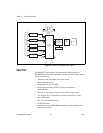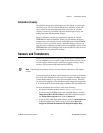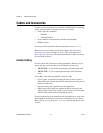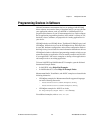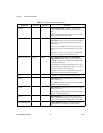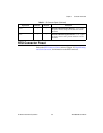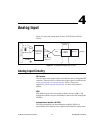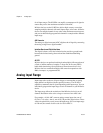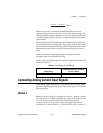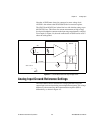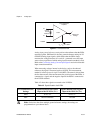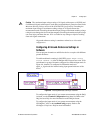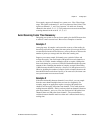
Chapter 4 Analog Input
NI 6238/6239 User Manual 4-2 ni.com
for all input ranges. The NI-PGIA can amplify or attenuate an AI signal to
ensure that you use the maximum resolution of the ADC.
M Series devices use the NI-PGIA to deliver high accuracy even when
sampling multiple channels with small input ranges at fast rates. M Series
devices can sample channels in any order at the maximum conversion rate,
and you can individually program each channel in a sample with a different
input range.
A/D Converter
The analog-to-digital converter (ADC) digitizes the AI signal by converting
the analog voltage into a digital number.
Isolation Barrier and Digital Isolators
The digital isolators across the isolation barrier provide a ground break
between the isolated analog front end and the earth/chassis/building
ground.
AI FIFO
M Series devices can perform both single and multiple A/D conversions of
a fixed or infinite number of samples. A large first-in-first-out (FIFO)
buffer holds data during AI acquisitions to ensure that no data is lost.
M Series devices can handle multiple A/D conversion operations with
DMA, interrupts, or programmed I/O.
Analog Input Range
Input range refers to the set of input voltages or currents that an analog
input channel can digitize with the specified accuracy. The NI-PGIA
amplifies or attenuates the AI signal depending on the input range. You can
individually program the input range of each AI channel on your M Series
device.
The input range affects the resolution of the M Series device for an AI
channel. Resolution refers to the voltage or current of one ADC code.
For example, a 16-bit ADC converts analog current inputs into one of
65,536 (= 2
16
) codes—that is, one of 65,536 possible digital values. These
values are spread fairly evenly across the input range. So, for an input range
of ±20 mA, the current of each code of a 16-bit ADC is:



